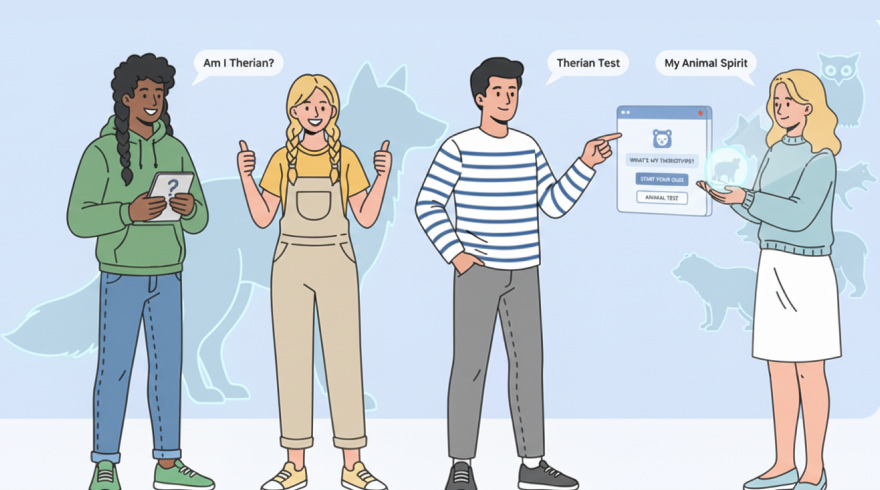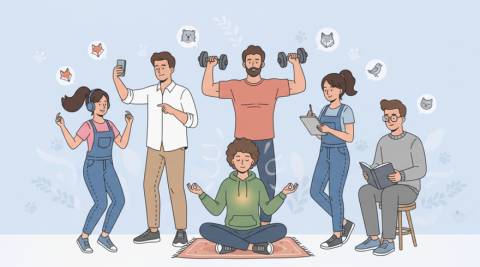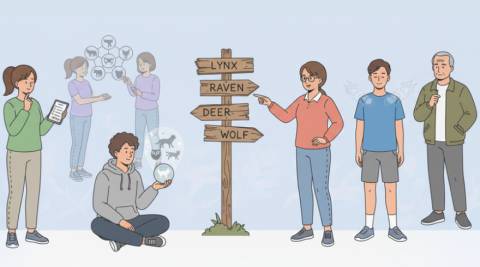Therian Identity Assessments: A Comprehensive Guide to Purpose and Methods

What Is a Therian Assessment?
Therian identity work blends introspection, embodiment, and community dialogue to understand persistent animal-linked experiences. Rather than chasing quick labels, seekers lean on reflective questions, journaling, and sensory recall to map patterns over time. This process thrives on patience, ethics, and context, recognizing that language can lag behind lived sensation. Because identity is nuanced, any questionnaire functions best as a conversation starter, not a seal of approval. Clear boundaries also matter: no quiz can validate your whole life, and no scorecard can replace your voice.
Across forums and journals, participants describe pivotal moments when structured prompts help translate elusive instincts into articulate narratives. Within identity exploration, many seekers eventually try the therian test as a reflective framework that organizes sensations, instincts, and memory traces. Beyond a single pathway, community projects curate multiple therian tests that foreground consent, context, and cultural sensitivity. Good tools also highlight common pitfalls, such as suggestion bias, role-play confusion, or pressure to conform to archetypes. Sustainable practice emphasizes personal pace, harm reduction, and peer support.
- Identity-first approach that respects autonomy and privacy.
- Open-ended prompts that invite stories, not just checkboxes.
- Encouragement to revisit results after new experiences arise.
- Clear separation between exploration, performance, and medical topics.
How Do Structured Questionnaires Work?
Well-crafted questionnaires aim to surface recurring themes: sensory salience, behavioral impulses, preferred environments, and symbolic imagery. Rather than deliver final verdicts, they frame patterns and trade-offs, which users can refine through continued journaling. Responsible creators document their assumptions, validation steps, update history, and moderation policies. Users benefit from slow, honest engagement and from pausing when questions feel leading or uncomfortable. A measured tempo prevents projection from overwriting quiet but authentic signals.
Among structured approaches, some creators prefer a focused theriotype test that narrows prompts to instinctive patterns, triggers, and symbolic affinities. Comparative formats labeled as a theriotypes test often contrast multiple archetypes side-by-side, inviting nuanced reflection. Both designs work best when paired with personal field notes, such as seasonal mood shifts, movement preferences, or dream motifs. The key is triangulation: collect hints from diverse contexts and see whether they reinforce or challenge the same narrative strand. When uncertainty persists, holding questions open is wiser than forcing a neat label.
- Signal tracking through recurring sensations and behaviors.
- Context logging to capture environment, stress, and mood effects.
- Bias checks to reduce suggestion, halo effect, and social desirability.
- Iteration that revisits earlier answers with fresh experiences.
Benefits of Using These Tools: Clarity, Language, and Community Support
Thoughtful questionnaires can convert scattered impressions into a cohesive map, offering language where there once was only hunch. Articulating tendencies, like habitat draw, social energy, or movement impulses, helps separate enduring traits from situational habits. With that clarity, it becomes easier to set boundaries, communicate needs, and choose practices that feel grounded. Many people also discover complementary threads, mythic symbolism, nature stewardship, or creative ritual, that enrich daily life.
Curiosity frequently starts with an are you therian test that introduces key terms, boundaries, and consent-centered participation norms. In private moments, people may choose an am i therian test to check hunches against lived patterns without external pressure. Either way, benefits grow when results feed into journaling, movement exploration, and mindful observation in varied settings. Community spaces can add perspective while discouraging gatekeeping, emphasizing that identity exploration is a marathon, not a sprint. With support and patience, the process often yields self-acceptance and durable personal insight.
- Language for communicating subtle experiences to supportive peers.
- Better distinction between identity, role-play, and fantasy.
- Structure for ongoing self-study and seasonal check-ins.
- Confidence to hold uncertainty compassionately while learning.
Setup, Privacy, and Ethical Use
Preparation matters as much as the questions themselves. Choose a calm time, reduce distractions, and plan breaks so you can notice bodily and emotional signals. Write brief notes when a prompt stirs strong imagery or memory, then step back to reflect before answering. If possible, take versions built with transparent methods, clear data policies, and inclusive language. Treat outcomes as provisional insights that gain meaning only when integrated with life outside the screen.
When convenience is important, a thoughtfully designed online therian test can guide newcomers through layered prompts with pacing that reduces suggestibility. Before you begin, skim the methodology and privacy section to understand how responses are stored, whether any demographic data is optional, and how to delete submissions. The following reference matrix can help you audit a tool’s practical quality before committing your time.
| Dimension | What it explores | Example prompts | Why it helps |
|---|---|---|---|
| Signals | Instincts, sensory salience, movement urges | “Which environments feel restoring, and why?” | Surfaces durable tendencies over fleeting moods |
| Context | Time, stress, setting, social dynamics | “Do certain seasons intensify specific feelings?” | Disentangles identity markers from situational effects |
| Bias checks | Leading phrasing, halo effect, conformity | “Where could suggestion be shaping your answers?” | Improves reliability and ethical integrity |
| Documentation | Methodology, updates, community feedback | “What sources informed this instrument?” | Builds trust and encourages informed use |
Accessibility expands with a carefully moderated therian test online that documents its methodology, revision history, and privacy safeguards. Regardless of platform, keep copies of your notes, consider retakes after meaningful life changes, and avoid comparing scores competitively. Most importantly, honor consent, yours and others’, before sharing results or stories, and remember that dignity comes first.
Interpreting Results and Next Steps: From Patterns to Practice
After completing a questionnaire, resist the urge to compress everything into a single label. Instead, scan for clusters, sensory motifs, environmental draws, and recurrent impulses, that appear across days, weeks, and seasons. Patterns that endure mild stress and varied settings tend to be more informative than those tied to novelty or fatigue. Cross-check your reactions by experimenting gently: spend time in different habitats, practice distinct movement styles, and journal without judgment.
If symbolic resonance is central for you, a selective therian animal test may highlight sensory cues, seasonal moods, and territory-like preferences. Decision trees can resemble a therian type test by clustering responses into provisional patterns rather than definitive labels. Either output benefits from slow integration: craft small rituals, adjust routines, or choose environments that align with what you’ve learned. When doubts arise, revisit earlier notes to see which insights remain sturdy over time. Growth often looks like gradual coherence, not overnight certainty.
- Translate patterns into gentle, real-world experiments.
- Reassess during seasonal shifts or major life changes.
- Seek supportive spaces that discourage gatekeeping.
- Treat labels as tools, not fences.
FAQ: Common Questions About Therian Assessments
How is a therian questionnaire different from a personality quiz?
Unlike quick entertainment quizzes, identity-oriented tools aim to surface enduring, embodied patterns and to promote ethical, consent-based exploration. Community-led audits sometimes function like a therians test to check that guidance remains inclusive and free of gatekeeping. The best resources avoid sensationalism, document their methods, and encourage users to keep personal agency at the center.
Is this a medical or psychological diagnosis?
No. These instruments are reflective aids, not clinical diagnostics, and they should never substitute professional care when mental or physical health is involved. Their value lies in language-making, pattern recognition, and community support, all of which remain voluntary and user-directed.
How accurate are the outcomes, and can they change?
Accuracy depends on honest engagement, clear methods, and follow-up reflection in daily life. Newcomers often ask about a what type of therian are you test while learning the distinction between play, role, and identity. Results may shift as you gather more data, refine interpretations, and separate long-term patterns from temporary states.
How should I prepare to reduce bias and suggestion?
Choose a calm time, plan breaks, and keep a journal open for brief notes when strong reactions arise. Read the tool’s documentation, avoid rushing, and answer from lived experience rather than desired outcomes. If a prompt feels leading, mark it, pause, and revisit later with a grounded mindset.
What should I do after receiving results?
Translate insights into modest experiments: environment changes, mindful movement, or creative practices that resonate with your patterns. Revisit your notes over weeks and months to see what holds steady, and seek communities that prioritize respect, privacy, and noncompetitive learning.
Latest News



